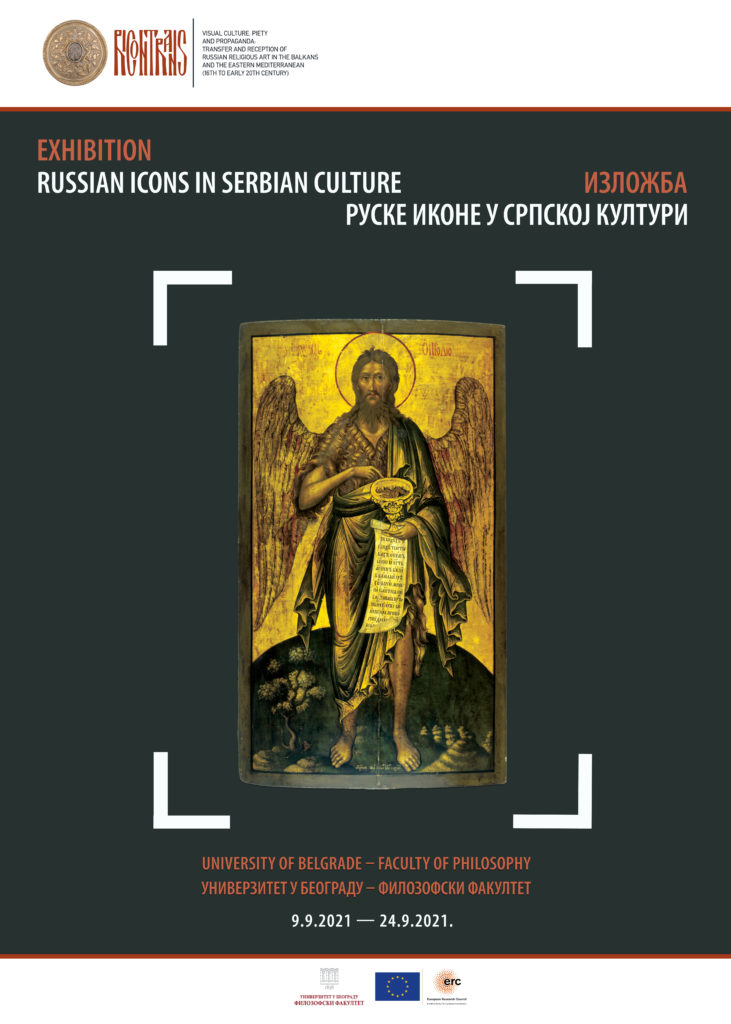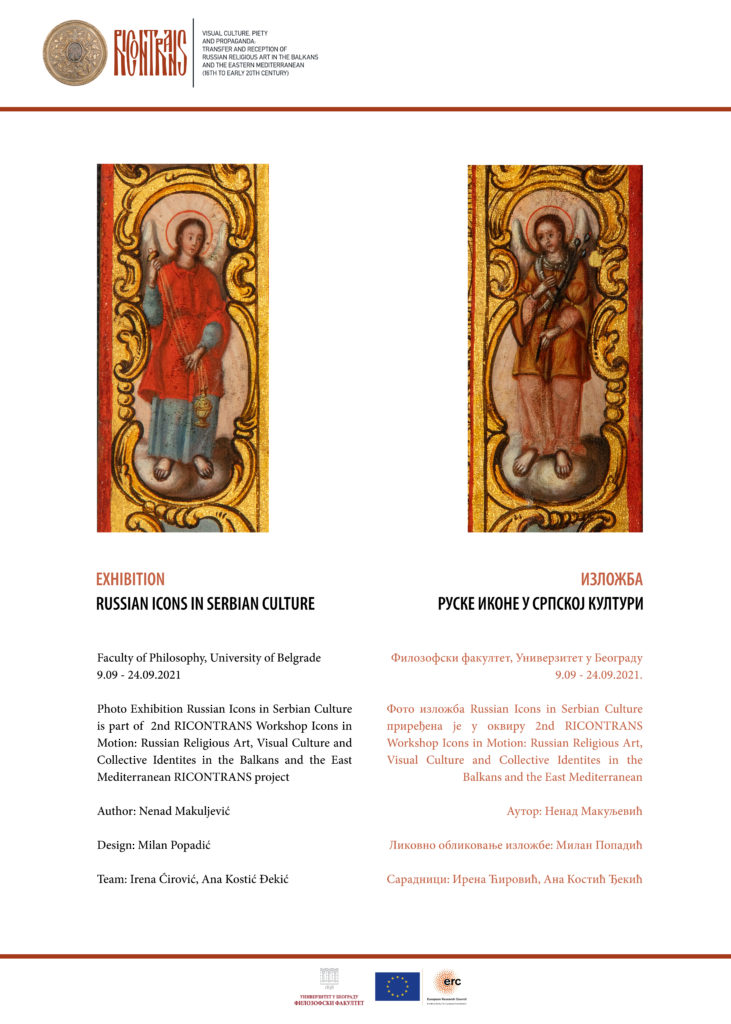Photo Exhibition: “Russian Icons in the Serbian Culture”, Belgrade Univeristy, Faculty of Philosophy, September 9-24, 2021
The photo exhibition “Russian Icons in the Serbian Culture” was part of the 2nd RICONTRANS Workshop: Icons in Motion: Russian religious art, visual culture and collective identities in the Balkans and the East Mediterranean.
It was curated by Professor Nenad Makuljević with the assistance of his team, Assistant Professor Ana Kostić and Irena Ćirović, and designed by Milan Popadić.

One of the characteristics of the early modern Serbian church culture is its close connection with the Russian Orthodox Church and the Russian empire. The beginnings of a Serbo-Russian ecclesiastical collaboration, and the first artistic and cultural interchange can be traced all the way back to the Middle Ages. A very intensive cooperation, however, began towards the end of the seventeenth century. This was the time of hardship for the Serbian and other Orthodox peoples of the Balkans who had found themselves in the Ottoman Empire, which was established as a Muslim state. Russia was the only free Orthodox Christian state at the time, as well as the most powerful protector of the Balkan Christians. In the Serbian case, the connection was reinforced by mutual, Slavic Orthodox faith and traditional connections.
There are many Russian liturgical books, vessels and icons in the numerous Serbian parish churches and monasteries, from Dalmatia to Mount Athos. In most cases concerning icons, there is no precise data in terms of when and how they arrived in Serbian churches and the Russian icons have not been catalogued. Based on field research and catalogues from churches and monasteries we assume that there are at least around a thousand Russian icons in Serbian churches. The process of Russian icons transfer was very complex and it was connected to piety, ideology and the ideals of orthodoxy.
You may read an interview on the exhibition here.
